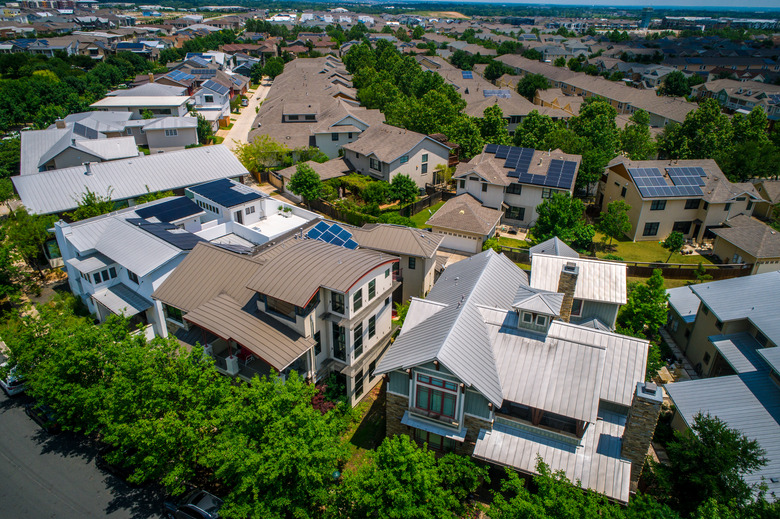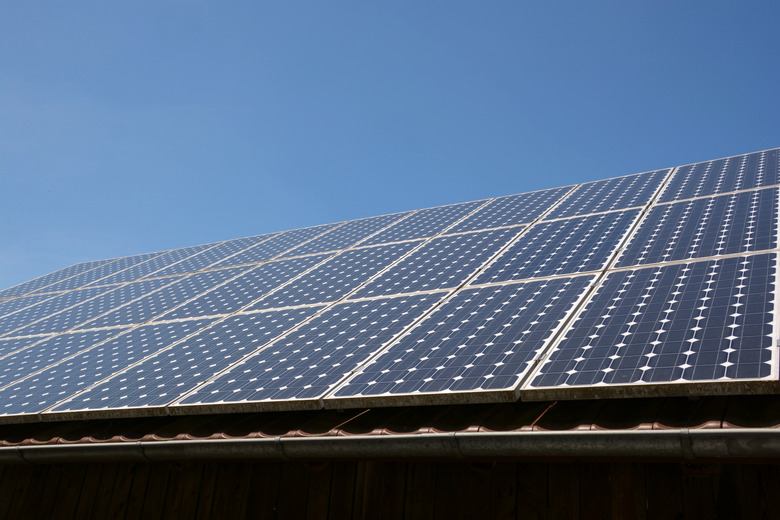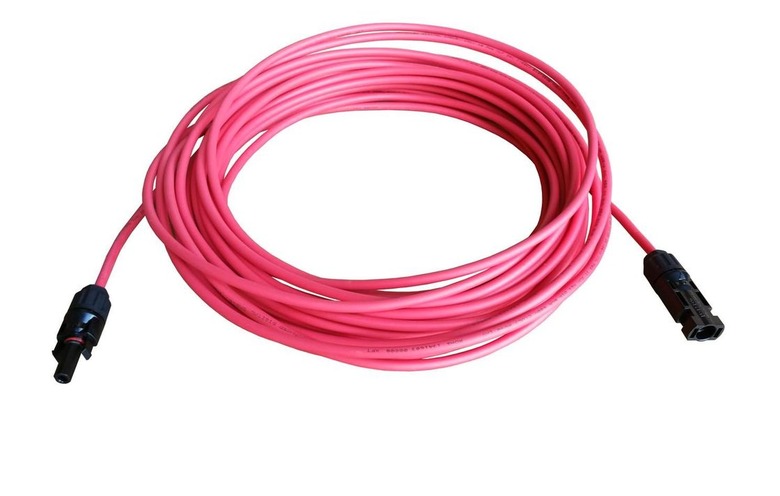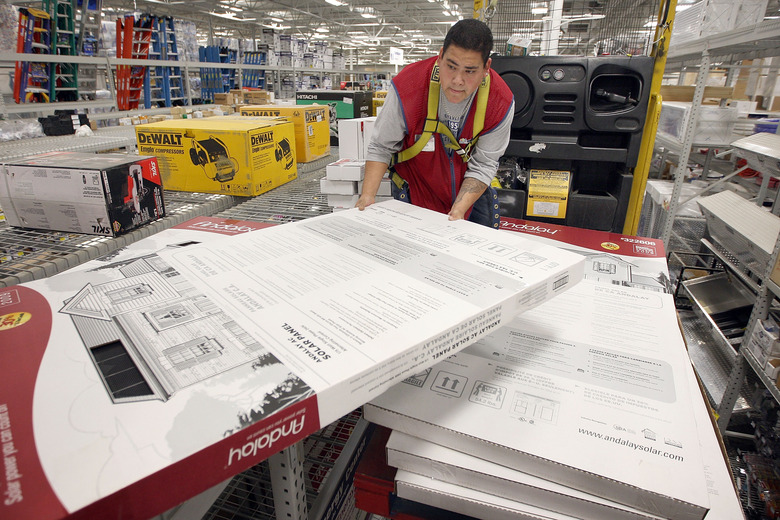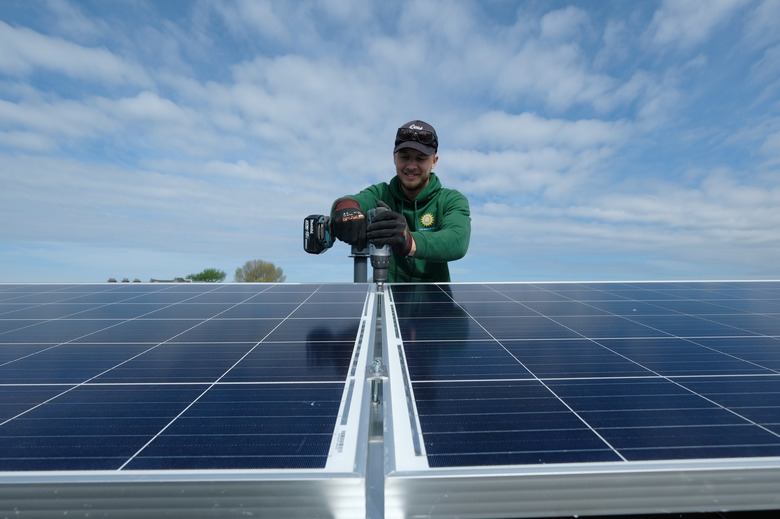How Much Do Solar Panels Cost?
To give you some quick numbers right out of the gate, the average solar electric (photovoltaic, or PV) system—one that includes a full bank of solar panels lining a residential roof and tied into the power grid—costs a little under $13,000, fully installed. That's the national-average cost for an average-size 6kW (kilowatt) system, calculated after deducting the full 30-percent federal tax credit (available through 2019, and thereafter at reduced levels through 2021).
While there are several factors affecting the overall cost of a PV system, the biggest factor tends to be where you live. That same 6kW system in Washington state can cost $10,000 to $14,000; in New York state it can cost over $16,000. Breaking down the major parts of a system helps you understand how the various costs add up.
Solar Panels Per-Watt Pricing
Solar Panels Per-Watt Pricing
In the solar electric industry, system costs are often quoted as a "per watt" figure. You find the per-watt price simply by dividing the total cost of the system by its overall size—the number of watts it can produce (on paper, at least). For example, if a 5,000-watt (5kW) system costs $15,000, its per-watt price is $3 (15,000 ÷ 5,000 = 3). According to EnergySage, a national solar marketplace, the average per-watt price for a PV system in 2019 is $3.05.
PV system size is based on the combined wattage rating of all of its solar panels. It is not the number of watts the system is capable of producing, which is a more complex figure. If a system has 20 panels rated for 300 watts each, the system size is 6,000 watts, or 6kW.
What Goes Into the Cost of a Solar System
What Goes Into the Cost of a Solar System
The cost of a complete PV system includes all the materials plus installation costs, minus any credits, rebates or other financial incentives that apply. Many incentives vary by location; you can learn about programs that apply in your area from the Database of State Incentives for Renewables & Efficiency (DSIRE), an online database funded by the U.S. Department of Energy.
As for materials, here are the essential components of a standard grid-tied home solar system:
- Solar panels
- Solar panel racking and related hardware (for mounting the
solar panels to the roof or ground) - Wiring and related equipment (electrical boxes, conduit, circuit
breakers, etc.) - DC to AC inverter(s) (you need one for each system or one
for every one or two panels, depending on the inverter type) - Rapid shutdown system (as needed)
- PV production meter
- DC disconnect switch (as needed)
Note that these are the basic materials for a grid-tied solar system, which is connected to the utility grid and is the simplest and most common type of PV setup. Off-grid systems, which do not connect to the utility grid, require additional components and expensive batteries that can easily double the cost over of a grid-tied system. In addition to materials costs, there are also permit fees (both at the state and local level, as applicable), which vary widely, from $100 to $500 and up. Some states have laws that cap the cost of PV permits; others do not. Local authorities may also assess their own permitting fees, since they're responsible for inspecting the system and processing the paperwork.
How Much Do Solar Panels Cost?
How Much Do Solar Panels Cost?
The solar panels themselves—the only parts of the system that generate electricity—account for roughly one-third of the total system cost. Panel price is often quoted per watt, and it depends on who's buying them and how many they're buying. A professional solar installer often can get a better price because they buy in bulk and they work with trade distributors, while a homeowner buying panels online will likely pay more for their panels. On average, pros pay about $0.75 per watt for the panels themselves. Homeowners buying their own pay about $1 per watt, on average, with prices ranging from about $0.85 to $1.25 per watt.
As with most major purchases, quality and brand stability are important factors. You pay more for better-quality panels made by a company that is likely to be around to honor any warranty claims for the next 25 to 30 years (the typical warranty period on today's solar panels). You'll also pay a bit more for panels with higher efficiency ratings (how much electricity a panel can produce at a given size).
Why Your Location Affects Solar Panel Pricing
Why Your Location Affects Solar Panel Pricing
Somewhat ironically, the cost of a professionally installed PV system is largely affected by the cost of electricity from the local utility. If you live in an area with high electricity rates, you'll likely pay more for a solar system than someone who lives where electricity is relatively cheap. It's a matter of market pricing: Potential solar customers often compare the cost of a PV system to the cost of paying for utility power. If they're used to paying a relatively high rate of $0.15 per watt to the power company, they're more willing to pay a higher cost for a new PV system that will offset those high utility costs. Most people also want to know how long it will take for solar panels to pay for themselves; the more you pay for utility power, the shorter the payback period.
While higher utility costs can drive up the cost of professional solar installation, this is not true for DIY installation. If you install a solar system yourself, you can expect to pay roughly the same for the solar equipment as anyone else in the country, since solar panels and other system components are not subject to significant regional market forces.
Professional vs. DIY Solar Installation
Professional vs. DIY Solar Installation
It takes some figuring to estimate how much you can save by installing your own solar panels (when it is allowed in your area), but solar experts say you can save anywhere from 30 to 50 percent with DIY installation. However, before you get excited about halving the cost of your new PV system, be aware of what solar installers do. They not only install the system, they also design it, supply all of its parts, and guarantee it; they obtain the permit and pass the inspections; they deal with the utility company for final hookup; they also often apply for rebates and credits, or they simply deduct the credit amount from your system cost.
If you're serious about DIY installation and would like an accurate cost estimate, do some research into system design to determine the type and size of PV system you will need, then price out the parts of that system through a solar equipment retailer. Don't forget to add permit fees and the cost to hire an electrician for the final electrical hookup. Alternatively, you might take a hybrid approach and find a local solar installer (most likely a small operator, not a big name) whom you can hire to help with the system design and equipment purchase (at pro prices), while you handle the actual installation.
